 Writing a recipe is harder than it looks. I found this out when a children’s magazine editor asked me to add a recipe to my article about eating insects. First, I thumbed through my recipe file mentally substituting bugs for a vital ingredient. Mushrooms stuffed with millipedes was out. (Most kids don’t like mushrooms.) I nixed beetle sausage, also. (Too much chopping and frying in a hot skillet.) Flipping to desserts, I chose toffee. I could substitute bugs for nuts. After my trip to the grocery store for butter, sugar and chocolate chips, I visited the pet shop, and asked for a cup of mealworms, which are fly larvae (also known as maggots, but that’s not very appetizing). The man handed me a little carton that looked like a Skippy cup of ice cream. I wrote that down because I would need to pass that information on to readers who, like me, had no clue how to purchase creepy-crawlies. With all the ingredients on the counter I recorded each step:
After that, I was on familiar ground blending butter and sugar, and sprinkling chocolate chips. I called my concoction Toffee Surprise, and taste-tested it in a large group setting where peer pressure encouraged full participation -- my mother’s birthday party! The verdict: The toffee was yummy, crunchy, and sweet with a subtle earthy aftertaste. Although I don’t plan on cooking more edible vermin, I did learn some important rules for writing a recipe: Choose a food that is reader-friendly; be aware of your readers’ abilities and safety issues; record every step in order; pay attention to even the smallest details; and prepare it yourself so you can work out the bugs (no pun intended). 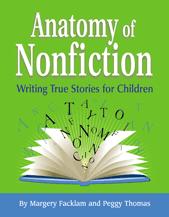 Peggy Thomas is the co-author of Anatomy of Nonfiction, the only writer's guide for children's nonfiction. To find out more about Peggy, visit her website. She also has a blog for writers, based on the book. Peggy Thomas is a member of iNK's Authors on Call and is available for classroom programs through FieldTripZoom, a terrific technology that requires only a computer, wifi, and a webcam. Click here to find out more. MLA 8 Citation
Thomas, Peggy. “How to Take an Elephant’s Temperature.” Nonfiction Minute, iNK Think Tank, 7 Nov. 2017, www.nonfictionminute.org/baking-with-bugs;-how-to-write-a-recipe.
0 Comments
 'Tis the season. The rotting season. You thought Halloween was full of ghosts, goblins and ghouls? Well, wait until the post-Halloween season. This is when your Jack O' Lantern begins its ghoulish decline. It starts as a pumpkin and it ends as a heap of goo. This is scary! Now is when your Halloween pumpkin begins to rot. Don't get me wrong. Rot is not gross. It is a beautiful thing—beautiful in its own deliciously disgusting way. You start with a proud Jack, a plump, shiny-skinned pumpkin. Halloween is over so you leave it on your porch, or inside by the window, or maybe you toss it into the garden or onto the compost heap. It attracts some visitors. A squirrel. A pair of mice. A scurry of sow bugs. They chew the skin of the pumpkin, leaving moist, rough surfaces, just perfect for the next wave of invaders: the molds and fungi and bacteria that start to grow. There are dozens, even hundreds, of types of organisms waiting to sink their "teeth" into pumpkin flesh as soon as the conditions are right. One kind of invader changes the conditions of the flesh to make it perfect for the next one. Meanwhile, the poor pumpkin is looking less and less like a pumpkin. Its skin turns to shades of black, gray and white, with only a few patches of dull orange. Its shape collapses into a heap, then a pile of mush, and then . . . well, no shape at all. Do you think rot rots? Imagine what your life would be like if things didn't rot. You'd be tripping over all the old pumpkins, not to mention mice, eagles, tomato plants, oak trees and everything else that ever walked, flew, swam or grew upon the earth. Their dead bodies simply wouldn't go away! Worse, their nutrients would be locked forever inside. The energy in the molecules they are made of would be unavailable to any other living things. Rot, properly known as "decomposition," releases all those good vitamins, sugars, proteins, carbohydrates and energy so that they can be used by next year's pumpkin, which will grow from the seeds of last year's pumpkin. Mice and eagles, tomatoes and the trees in a nearby forest can grow and reproduce because nutrients and energy pass through complex food webs from plants to the animals that eat those plants, to other animals that eat those animals. It's all possible because of rot. So you see, rot doesn't rot. Rot rocks! 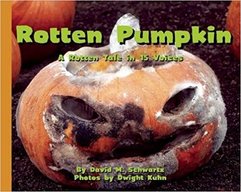 David is the author of > 50 books on math and science, including his newest, rottenest title, Rotten Pumpkin. For more information, click here. David is a member of iNK's Authors on Call and is available for classroom programs through Field Trip Zoom, a terrific technology that requires only a computer, wifi, and a webcam. Click here to find out more. 
How well do you handle spicy food? Do you find food with a “kick” eye-watering and difficult to swallow? Or are you a real “fire eater;” nothing can be too hot?
A scientist, named Wilbur Scoville, figured out how to rank spicy food for hotness in 1912. The “heat” from peppers comes from a chemical called capsaicin (cap-say-sin). Pure capsaicin registers 16 million heat units on the Scoville scale. Zero is a sweet green, red or yellow pepper. A fresh, green Jalapeño (ha-la-pen-yo) is rated 2,500-8,000 units, a lot less hot than pure capsaicin. The fact is that you don’t “taste” the heat. The sensation of heat comes from nerve endings in your tongue that respond to pain. Of course, these nerve endings are not just in your tongue. They are all over your body. So a good scientific question is: Can you “taste” hot sauce with, say, your wrist? Check it out. Rub the inside of your wrist with a cut Jalapeño pepper or some hot sauce. Wait a few minutes. Feel the burn? Rinse off your wrist well with cool water. Your tongue, of course, is much more sensitive than your wrist to many chemicals because it is always wet. Capsaicin, like a lot of other chemicals dissolves in water and reaches those nerve endings more quickly. Another liquid that triggers your pain nerves in your tongue is soda. The carbon dioxide in the bubbles reacts with an enzyme in your mouth to form a weak chemical called carbonic acid. This acid fires the pain nerve endings in your tongue giving soda its “bite.” How well can you tolerate this pain? Stick your tongue into a freshly opened glass of soda and hold it there. See how long you can keep it in the drink. One minute? Two minutes? Most people can’t last a minute. But maybe you’re tougher than that. Some Mexican parents give their kids mixtures of sugar and red chili powder when they’re little to build up their tolerance for spicy foods. Do you think that people who love spicy food could also be champions at keeping their tongues immersed in soda? Design an experiment to find out at your next party. Hot Stuff from Vicki Cobb on Vimeo. atonguelashing from Vicki Cobb on Vimeo. 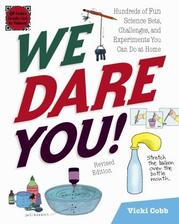
These videos were made from Vicki Cobb’s book We Dare You! She invites you to join her video project and make your own videos from her book and post them on the www.wedareyouvideos.com website. Vicki Cobb is a member of iNK's Authors on Call and is available for classroom programs through Field Trip Zoom, a terrific technology that requires only a computer, wifi, and a webcam. Click here to find out more.
MLA 8 Citation
Cobb, Vicki. "Some Painful Truth." Nonfiction Minute, iNK Think Tank, 17 Oct. 2017, www.nonfictionminute.org/the-nonfiction-minute/some-painful-truth. 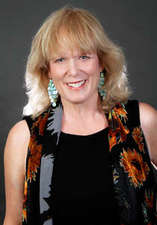 Alexandra Siy Science through the lens Do you know about the “birds and the bees?” If you don’t, don’t worry. You will learn soon enough. When it comes to flowers there’s nothing to hide. There’s just no way around it—flowers are sexy. Their colorful, curvy petals are soft as velvet and as fragrant as the most expensive perfumes. Their nectar is as sweet as…well, honey. Besides being pretty, flowers have power. Their pollen is packed with protein. No wonder the birds and the bees, and insects of many kinds, find them so irresistible. Pollen may be the perfect food for bees, but it is also the way plants get together. Think about it. Plants can’t walk, crawl, swim, or fly. So, how does boy meet girl? In order to reproduce, the pollen from the male has to have direct contact with the female (and I don’t mean texting). Pollen grains are carried on the legs of bees and in the beaks of birds, from one flower to another. A few grains become engaged, hitched, and literally stuck on the sticky female flower part called the stigma. Sugar from the stigma fuels the pollen grain to sprout a tube. This pollen tube grows downward through the female part called the pistil and into the chambers that contain tiny bubble shaped eggs. When the tip of the pollen tube finally reaches an egg chamber it releases a male sperm cell. The sperm and the egg unite, and a brand-new cell is formed. This is the beginning of a seed. Picture an apple. Before the apple was a fruit containing seeds, it was a very sexy flower. So the next time someone asks you if you know about the birds and the bees, tell them about flower power. They might be surprised how plants get together to make baby plants, which in scientific terms is an interesting example of the process called sexual reproduction. 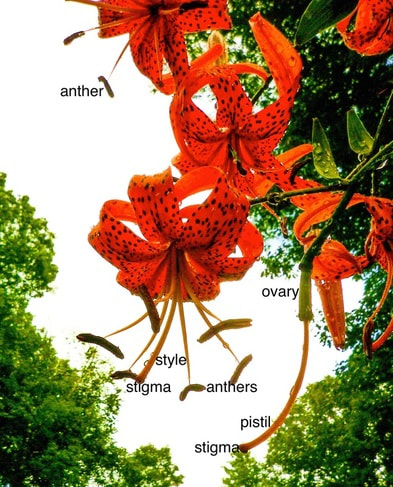 Pollen is contained in the anthers, which are the six slipper shaped sacs at the end of the stamens. The female stigma is the rounded tip located at the top of the style. The pollen tube is a microscopic tube that grows through the style and into the ovary, which is hidden inside the base of this flower. Hanging down, at the lower right side of the photo are the remains of another flower. The petals and stamen have fallen off revealing the entire pistil: the stigma, style, and the ovary (green structure), which holds the eggs. Photo credit © Alexandra Siy 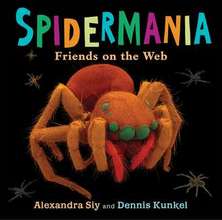 Why not watch some web-spinners do their thing with the help of this stunning and superlative book by Alexandra Siy? You can read more about it here. Alexandra Siy is a member of iNK's Authors on Call and is available for classroom programs through Field Trip Zoom, a terrific technology that requires only a computer, wifi, and a webcam. Click here to find out more. MLA 8 Citation
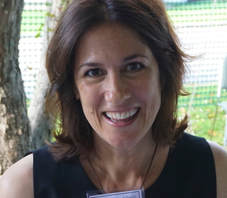 Do you like ketchup? Maybe relish is your favorite condiment. Well, people in the ancient world had a favorite condiment, too. It was called garum. The ancient Greeks couldn’t get enough of it. Later, the Byzantines loved it, too. But garum was most popular during ancient Roman times. (The Roman Empire lasted from 27 BC to AD 476, so they must have gobbled down a lot of garum.) The problem with garum was that making it could be an extremely stinky process. Garum makers were told to move their factories to the outskirts of the city, although probably no one enforced this. The Romans dumped garum onto practically everything they ate. Should you be curious to try garum yourself, I’ve written out the recipe for you. You’re welcome.
Garum is actually quite nutritious—full of amino acids, proteins, and vitamin D from all that time in the sun. And the rotten sludge left at the bottom is also highly nutritious, so you can save that for another use. Try spreading it on toast! (c) Sarah Albee, 2014 A Roman banquet 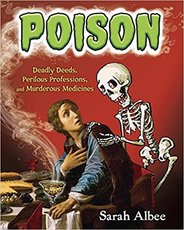 Sarah Albee's latest book is Poison: Deadly Deeds, Perilous Professions and Murderous Medicines. You can read a review that gives you a dose of what's in this book. MLA 8 Citation Albee, Sarah. "Something's Rotten in Rome." Nonfiction Minute, iNK Think Tank, 15 Sept. 2017, www.nonfictionminute.org/the-nonfiction-minute/somethings-rotten-in-rome. |
*NEWS
|
For Vicki Cobb's BLOG (nonfiction book reviews, info on education, more), click here: Vicki's Blog
The NCSS-CBC Notable Social Studies Committee is pleased to inform you
that 30 People Who Changed the World has been selected for Notable Social Studies Trade Books for Young People 2018, a cooperative project of the National Council for the Social Studies (NCSS) & the Children’s Book Council
Categories
All
Abolitionists
Adams Janus
Adaptation
Adaptations
Adkins Jan
Advertising
Aerodynamics
Africa
African American History
African Americans
Africa West
Agriculture
Aircraft
Air Pilots
Air Pressure
Air Travel
Albee Sarah
Alchemy
Alligators
Allusion
American History
American Icons
Amphibians
Amundsen Roald
Anatomy
Ancient
Ancient Cultures
Anderson Marian 1897-1993
Animal Behavior
Animal Experimentation
Animal Intelligence
Animals
Animation
Antarctica
Ants
Apache Indians
Apes
April Fool's Day
Architecture
Argument
Arithmetic
Art
Art Deco
Artists
Arts
Asia
Astronauts
Astronomy
Athletes
Atomic Theory
Audubon Societies
Authors
Autobiography
Automobiles
Aviation
Awards
Bacteria
Baseball
Battuta Ibn
Bears
Beatles
Beavers
Bees
Biodegradation
Biography
Biology
Biomes
Biomimicry
Biplanes
Birds
Black Death
Black History
Blindness
Blizzards
Bombs
Bonaparte Napoleon
Boone Daniel
Botany
Brazil
Bridges
Brill Marlene Targ
Brooklyn Bridge
Brown John
Buffaloes
Building Materials
Butterflies
Caesar
Caesar Julius
Caissons
Calculus
Calendars
Cannibal
Capitals
Caravaggio
Carbon Dioxide
Carnivores
Carson Mary Kay
Cartoons & Comics
Carving (Decorative Arts)
Cascade Range
Castaldo Nancy
Castles
Castrovilla Selene
Cathedrals
Cats
Caves
Celts
Cemeteries
Chemistry
Children's Authors
Child Welfare
China
Choctaw Indians
Christmas
Chronometers
Cicadas
Cinco De Mayo
Ciphers
Circle
Citizenship
Civil Rights
Civil Rights Movements
Civil War
Civil War - US
Climate
Climate Change
Clocks And Watches
Clouds
Cobb Vicki
COBOL (Computer Language)
Code And Cipher Stories
Collard III Sneed B.
Collectors And Collecting
Color
Commerce
Communication
Competition
Compilers
Composers
Computers
Congressional Gold Medal
Consitution
Contests
Contraltos
Coolidge Calvin
Cooling
Corms
Corn
Counterfeiters
Covid-19
Crocodiles
Cryptography
Culture
Darwin Charles
Declaration Of Independence
Decomposition
Decompression Sickness
Deep-sea Animals
Deer
De Medici Catherine
Design
Detectives
Dickens Charles
Disasters
Discrimination
Diseases
Disney Walt
DNA
Dogs
Dollar
Dolphins
Douglass Frederick 1818-1895
Droughts
Dr. Suess
Dunphy Madeleine
Ear
Earth
Earthquakes
Ecology
Economics
Ecosystem
Edison Thomas A
Education
Egypt
Eiffel-gustave-18321923
Eiffel-tower
Einstein-albert
Elephants
Elk
Emancipationproclamation
Endangered Species
Endangered-species
Energy
Engineering
England
Englishlanguage-arts
Entomology
Environmental-protection
Environmental-science
Equinox
Erie-canal
Etymology
Europe
European-history
Evolution
Experiments
Explorers
Explosions
Exports
Extinction
Extinction-biology
Eye
Fairs
Fawkes-guy
Federalgovernment
Film
Fires
Fishes
Flight
Floods
Flowers
Flute
Food
Food-chains
Foodpreservation
Foodsupply
Food-supply
Football
Forceandenergy
Force-and-energy
Forensicscienceandmedicine
Forensic Science And Medicine
Fossils
Foundlings
France
Francoprussian-war
Freedom
Freedomofspeech
French-revolution
Friction
Frogs
Frontier
Frontier-and-pioneer-life
Frozenfoods
Fugitiveslaves
Fultonrobert
Galapagos-islands
Galleys
Gametheory
Gaudi-antoni-18521926
Gender
Generals
Genes
Genetics
Geography
Geology
Geometry
Geysers
Ghosts
Giraffe
Glaciers
Glaucoma
Gliders-aeronautics
Global-warming
Gods-goddesses
Gold-mines-and-mining
Government
Grant-ulysses-s
Grasshoppers
Gravity
Great-britain
Great-depression
Greece
Greek-letters
Greenberg Jan
Hair
Halloween
Handel-george-frederic
Harness Cheryl
Harrison-john-16931776
Health-wellness
Hearing
Hearing-aids
Hearst-william-randolph
Henry-iv-king-of-england
Herbivores
Hip Hop
History
History-19th-century
History-france
History-world
Hitler-adolph
Hoaxes
Holidays
Hollihan Kerrie Logan
Homestead-law
Hopper-grace
Horses
Hot Air Balloons
Hot-air-balloons
Housing
Huguenots
Human Body
Hurricanes
Ice
Icebergs
Illustration
Imagery
Imhotep
Imperialism
Indian-code-talkers
Indonesia
Industrialization
Industrial-revolution
Inquisition
Insects
Insulation
Intelligence
Interstatecommerce
Interviewing
Inventions
Inventors
Irrational-numbers
Irrigation
Islands
Jacksonandrew
Jazz
Jeffersonthomas
Jefferson-thomas
Jemisonmae
Jenkins-steve
Jet-stream
Johnsonlyndonb
Jokes
Journalism
Keeling-charles-d
Kennedyjohnf
Kenya
Kidnapping
Kingmartinlutherjr19291968
Kingmartinlutherjr19291968d6528702d6
Kings-and-rulers
Kings Queens
Kings-queens
Koala
Labor
Labor Policy
Lafayette Marie Joseph Paul Yves Roch Gilbert Du Motier Marquis De 17571834
Landscapes
Languages-and-culture
Law-enforcement
Layfayette
Levers
Levinson Cynthia
Lewis And Clark Expedition (1804-1806)
Lewis Edmonia
Liberty
Lift (Aerodynamics)
Light
Lindbergh Charles
Liszt Franz
Literary Devices
Literature
Lizards
Longitude
Louis XIV King Of France
Lumber
Lunar Calendar
Lynching
Macaws
Madison-dolley
Madison-james
Madison-james
Mammals
Maneta-norman
Maneta-norman
Marathon-greece
Marine-biology
Marine-biology
Marines
Marsupials
Martial-arts
Marx-trish
Mass
Massachusetts-maritime-academy
Mass-media
Mastodons
Mathematics
May-day
Mcclafferty-carla-killough
Mcclafferty-carla-killough
Mckinley-william
Measurement
Mechanics
Media-literacy
Media-literacy
Medicine
Memoir
Memorial-day
Metaphor
Meteorology
Mexico
Mickey-mouse
Microscopy
Middle-west
Migration
Military
Miners
Mississippi
Molasses
Monarchy
Monsters
Montgomery
Montgomery-bus-boycott-19551956
Montgomery-heather-l
Monuments
Moon
Moran-thomas
Morsecode
Morsesamuel
Moss-marissa
Moss-marissa
Motion
Motion-pictures
Mummies
Munro-roxie
Munro-roxie
Musclestrength
Museums
Music
Muslims
Mythologygreek
Nanofibers
Nanotechnology
Nathan-amy
Nathan-amy
Nationalfootballleague
Nationalparksandreserves
Nativeamericans
Native-americans
Native-americans
Naturalhistory
Naturalists
Nature
Nauticalcharts
Nauticalinstruments
Navajoindians
Navigation
Navy
Ncaafootball
Nervoussystem
Newdeal19331939
Newman-aline
Newman-aline
Newton-isaac
New-york-city
Nobelprizewinners
Nomads
Nonfictionnarrative
Nutrition
Nylon
Nymphs-insects
Oaths Of Office
Occupations
Ocean
Ocean-liners
Olympics
Omnivores
Optics
Origami
Origin
Orphans
Ottomanempire
Painters
Painting
Paleontology
Pandemic
Paper-airplanes
Parksrosa19132005
Parrots
Passiveresistance
Patent Dorothy Hinshaw
Peerreview
Penguins
Persistence
Personalnarrative
Personification
Pets
Photography
Physics
Pi
Pigeons
Pilots
Pinkertonallan
Pirates
Plague
Plains
Plainsindians
Planets
Plantbreeding
Plants
Plastics
Poaching
Poetry
Poisons
Poland
Police
Political-parties
Pollen
Pollution
Polo-marco
Populism
Portraits
Predation
Predators
Presidentialmedaloffreedom
Presidents
Prey
Prey-predators
Prey-predators
Prime-meridian
Pringle Laurence
Prohibition
Proteins
Protestandsocialmovements
Protestants
Protestsongs
Punishment
Pyramids
Questioning
Radio
Railroad
Rainforests
Rappaport-doreen
Ratio
Reading
Realism
Recipes
Recycling
Refrigerators
Reich-susanna
Religion
Renaissance
Reproduction
Reptiles
Reservoirs
Rheumatoidarthritis
Rhythm-and-blues-music
Rice
Rivers
Roaringtwenties
Roosevelteleanor
Rooseveltfranklind
Roosevelt-franklin-d
Roosevelt-theodore
Running
Russia
Safety
Sanitation
Schwartz David M
Science
Scientificmethod
Scientists
Scottrobert
Sculpture
Sculpturegardens
Sea-level
Seals
Seals-animals
Secretariesofstate
Secretservice
Seeds
Segregation
Segregationineducation
Sensessensation
September11terroristattacks2001
Seuss
Sextant
Shackletonernest
Shawneeindians
Ships
Shortstories
Silkworms
Simple-machines
Singers
Siy Alexandra
Slavery
Smuggling
Snakes
Socialchange
Social-change
Socialjustice
Social-justice
Socialstudies
Social-studies
Social-studies
Sodhouses
Solarsystem
Sound
Southeast-asia
Soybean
Space Travelers
Spain
Speech
Speed
Spiders
Spies
Spiritualssongs
Sports
Sports-history
Sports-science
Spring
Squirrels
Statue-of-liberty
STEM
Storms
Strategy
Sugar
Sumatra
Summer
Superbowl
Surgery
Survival
Swanson-jennifer
Swinburne Stephen R.
Synthetic-drugs
Taiwan
Tardigrada
Tasmania
Tasmanian Devil
Tasmanian-devil
Technology
Tecumsehshawneechief
Telegraph-wireless
Temperature
Tennis
Terrorism
Thomas Peggy
Thompson Laurie Ann
Time
Titanic
Tombs
Tortoises
Towle Sarah
Transcontinental-flights
Transportation
Travel
Trees
Trung Sisters Rebellion
Tundra
Turnips
Turtles
Typhoons
Underground Railroad
Us-environmental-protection-agency
Us History
Us-history
Ushistoryrevolution
Us History Revolution
Us-history-war-of-1812
Us Presidents
Ussupremecourtlandmarkcases
Vacations
Vaccines
Vangoghvincent
Vegetables
Venom
Vietnam
Viruses
Visual-literacy
Volcanoes
Voting-rghts
War
Warne-kate
Warren Andrea
Washington-dc
Washington George
Water
Water-currents
Wax-figures
Weapons
Weather
Weatherford Carole Boston
Whiting Jim
Wildfires
Winds
Windsor-castle
Wolves
Woman In History
Women
Women Airforce Service Pilots
Women-airforce-service-pilots
Womeninhistory
Women In History
Women-in-science
Women's History
Womens-roles-through-history
Wonder
Woodson-carter-godwin-18751950
World-war-i
World War Ii
World-war-ii
Wright Brothers
Writing
Writing-skills
Wwi
Xrays
Yellowstone-national-park
Zaunders Bo
ArchivesMarch 2021
February 2021
January 2021
December 2020
November 2020
October 2020
September 2020
June 2020
May 2020
April 2020
March 2020
February 2020
January 2020
December 2019
October 2019
September 2019
August 2019
July 2019
May 2019
April 2019
March 2019
February 2019
January 2019
December 2018
November 2018
September 2018
June 2018
May 2018
April 2018
March 2018
February 2018
January 2018
December 2017
November 2017
October 2017
September 2017
March 2017
The NONFICTION MINUTE, Authors on Call, and. the iNK Books & Media Store are divisions of iNK THINK TANK INC.
a 501 (c) (3) nonprofit corporation. To return to the iNK Think Tank landing page click the icon or the link below. :
http://inkthinktank.org/
For more information or support, contact thoughts@inkthinktank.org
For Privacy Policy, go to
Privacy Policy
© COPYRIGHT the Nonfiction Minute 2020.
ALL RIGHTS RESERVED.
This site uses cookies to personalize your experience, analyze site usage, and offer tailored promotions. www.youronlinechoices.eu
Remind me later
Archives
March 2023
February 2023
January 2023
December 2022
November 2022
October 2022
September 2022
June 2022
May 2022
April 2022
March 2022
February 2022
January 2022
December 2021
November 2021
September 2021
April 2021
March 2021
February 2021
November 2020
October 2020
September 2020
June 2020
May 2020
April 2020
March 2020
February 2020
January 2020
October 2019
August 2019
July 2019
May 2019
April 2019
December 2018
September 2018
June 2018
May 2018
March 2018
February 2018
January 2018
December 2017
November 2017
October 2017
September 2017


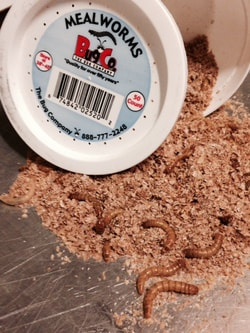
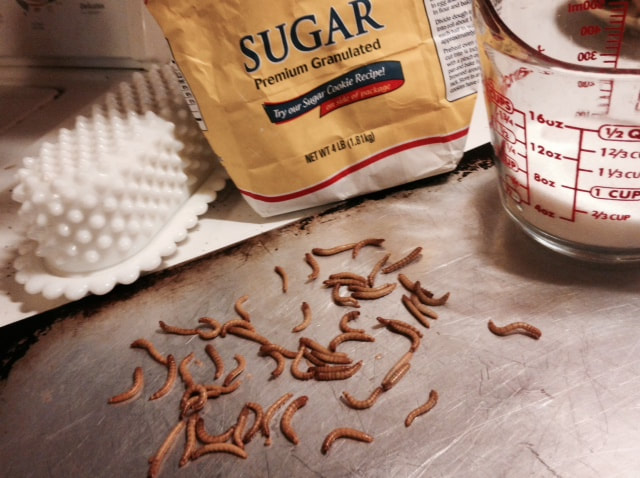


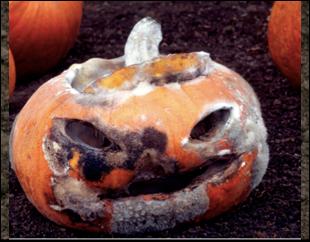
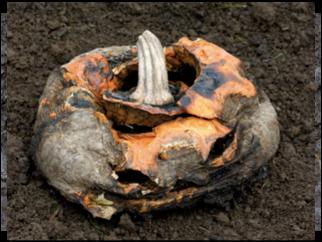











 RSS Feed
RSS Feed
